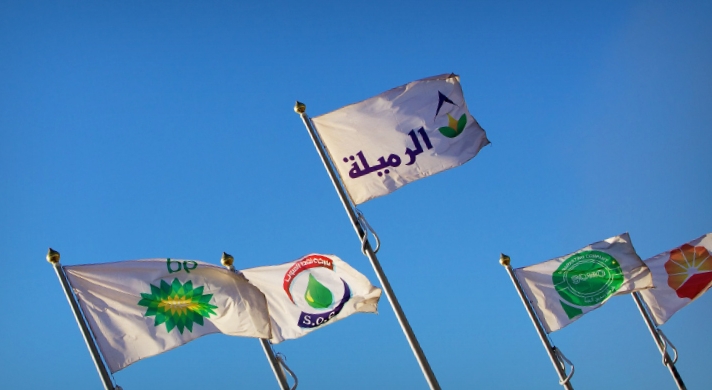For the past twelve weeks, nothing has had a greater social impact in the UK than the coronavirus pandemic.
Our little village (pop. 1000) was as affected as any other around the globe. People caught the virus, were anxious, indifferent or keen to help. One pub closed, the other stayed open for takeaways. Home businesses struggled with suppliers and customers as countries closed their doors. People were put on furlough or worked from hastily cobbled-together home offices. For me personally it meant I put on hold reading the Inter-American Development Bank’s draft Environmental and Social Policy Framework to help set up and support a village-wide network of volunteers.
I became, in essence, a community liaison officer – a role which Emma Wilson and I have studied extensively[1]and which led to IPIECA’s Community Liaison Officers Teambuilding and Management Guidance[2]. This time, the ‘project proponent’ wasn’t a 1700-kilometre pipeline, but a 120-nanometer-diameter virus particle, or rather the big and baggy set of rules, regulations and threats to our well-being that was imposed on us as a result of the pandemic.
This mental collision of international social impact policy-setting frameworks and local ‘social impact mitigation’ set me thinking, How did the reality of responding to the pandemic in a small village setting compare with the theory and language used in the international world of social impact management?
Hmmmm…
Thought #1
The Social Engagement Plan should document how consultation will be carried out with different groups in the community, identifying what measures will be implemented to remove barriers to participation[3].
Or
‘I can see you, Mother, but I can’t hear you’
Around one year BCV (Before CoronaVirus) I undertook a small piece of work supporting an international oil company investing in a major development – the first of its kind in the country in question. One of my meetings was with the expat Head of Security whom, as I recall, was hopping with glee, talking about a remote community directly impacted by (and not particularly happy with) the project. ‘I’ve given them all mobile phones and they’ll report in news and any problems. Directly to us. It’s brilliant!’ I may have raised an exhausted eyebrow, but he was already on his way, happily barrelling along the corridor, secure in his belief that he’d got community engagement sussed.
I doubted it then. I doubt it even more now. The Lockdown may have prompted a shape-shifting migration to online communication, but even now technical literacy is not universal – nor is it universally popular. Our village’s community café had been attracting around 70 customers each Tuesday morning; across 10 weeks fewer than 25 joined the ‘Café Zooms’ that were held in their stead and while for some of us it was a welcome part of our Lockdown lives, others joined once, didn’t care for it and never appeared again. Removing barriers to participation can mean giving everyone a smart phone or spending the first ten minutes of any call shouting at other participants to ‘click the thing that looks like a camera at the bottom left of the screen’.
But it’s more than that. Communication means trust, not tools. And that means responding to how we all want engagement/consultation to be carried out. If we want a socially-distanced chat on a doorstep because we are shielding or unable to get out, we chat on a doorstep. If a weekly newsletter works, guess what? You write one. It means building on existing, trusted networks and structures, and involving respected individuals. We want to have the information we need in a way that makes sense for us. And we want to be listened to.
Which brings me to….
Thought #2
[They] will provide stakeholders with timely, relevant, understandable and accessible information and consult with them in a culturally appropriate manner, which is free of manipulation, interference, coercion, discrimination and intimidation[4].
Or
Psst….does anyone know where to buy yeast?
In the early, loo-roll-lite days of the Lockdown, voluntary neighbour groups began springing up across the village. So too did alarmist stories about fraudsters taking advantage of the isolated. This meant it was crucial that the Parish Council acted as an umbrella to these neighbourhood groups, establishing legitimacy and aiming to cover the whole village before that first week was out – something that the volunteers on their own couldn’t do. Twenty-five volunteers acted as Covid Coordinators, setting up WhatsApp or email or door-to-door groups, with no group covering more than around 20 households. They were able to support the needs of their immediate neighbours, answering requests for help and sharing everything from chocolate fudge to tomato plants.
What defines ‘relevant…and accessible information’ may surprise you. In our Lockdown, the illicit County Lines drug-distributors could have made a fortune by peddling little bags of baking powder. Knowing where to secure yeast and a plastic bag full of bread flour created more wellbeing than many an online mindfulness course. Knowing how to short-cut the bewildering whirlwind of links and advice on the County Council information ‘hub’ to find the nugget of information you really need about anything from domestic violence to dentistry became a full-time job – but one which seemed to be valued by people across the village. As well as being timely, relevant, understandable and accessible, information provision needs to be responsive.
Our neighbour groups were also able to share information quickly, far quicker than the larger volunteer networks set up by the County Council or central government. If you need an emergency pharmacist, you need to know which one is open now, not next week.
Providing ‘timely, relevant, understandable, accessible’ and responsive information takes time to do well. Listening should never stop. In our survey of oil industry community liaison officers, we found that on average a CLO is responsible for 30 settlements. That workload may limit their effectiveness. My Covid experience only strengthens that view.
Thought #3
Does the Social Investment programme contribute to group cohesion or, instead, to inter-group fragmentation? Are benefits distributed in an inclusive or exclusive manner…. Are SI programmes supporting the entire community or only specific groups or individuals?[5]
Or
People will still put crap in your book box
You know the kind of book: something that looks like its last resting place was in a pocket of a corpse pulled from the Thames. Stains on the cover that cause even the most well-meaning readers to recoil in horror from shelves in second-hand bookshops. Yes, some people view them as legitimate contributions to your other-wise delightful and popular Little Roadside Library, set up in the early days of Lockdown for stir-crazy kids and their crazier parents. Don’t they get it? Well, yes they do: they areparticipating, and they are doing what you asked – just not in the way you planned. Your book boxes have local buy-in: a visit becomes ‘structure’ to a family’s day; a comfort for those living alone; an opportunity to chat for passers-by. It’s going well, even if it’s not perfect.
Good social investment programmes are hard to get right. Much of the guidance assumes that somewhere out there is a perfectly-designed, inclusive, effective social programme, delivering sustainable benefits which are controlled and identifiable from the start. There isn’t. There are well-planned, well-designed programmes – and there are plenty of horrors conceived as sops to officials and ‘first family’ foundations, which end up stranded and resented. If you want a long read on how to do it well, you’ll do no better than the IFC’s Strategic Community Investment: A Good Practice Handbook for Companies Doing Business in Emerging Markets. Want a short read? Stick with Fig 0.1 (Seven Steps for Developing a Community Investment Strategy).
But as the IFC admits, and my Little Roadside Library proves: ‘Trying to capture and convey the community investment process in a document forces a sequential logic that can sometimes make what is an interative, dynamic, often unpredictable process look overly precise and mechanical.’
My own advice? Pull on the Marigolds; fish that paginated virus-carrier out of your book box; and lob it in the recycling. You’re welcome.
Thought #4
Promote development-oriented policies that support productive activities, decent job creation, entrepreneurship, creativity and innovation, and encourage the formalization and growth of micro- and small- and medium-sized enterprises[6]
Or
A takeaway curry from the pub is your moral obligation
What did you do in the Lockdown, Daddy? Did you contribute to Jeff Bezos’ divorce settlement? Or take time to seek out what small local businesses are offering? True, buying local isn’t always easy (and never as easy as pressing Amazon’s Buy Now button). Some businesses closed, then opened; others did the opposite. The brave found ways of reaching their customers some way, somehow. Those that did may not have been richly rewarded, but they did earn respect – and respected customers in return. ‘You have saved our business,’ said the local bookseller, thanking all of us who ordered our lockdown reading through them. We worked out the answer to the classic short-term-versus-long-term supply chain dilemma quickly and all by ourselves.
Big, efficient global companies favour big, efficient global contracts. Local content goals enshrined in production sharing contracts and other agreements may be ambitious but are often fudged. Few of the development banks include performance requirements relating specifically to the local supply chain in their E&S frameworks. Labour rights, yes. Transparency, yes. But how to adapt a supply chain to support mutually-beneficial developments and operations? Almost never. But consider this: in 2005, at the height of the construction of the Baku-Tbilisi-Ceyhan pipeline, BP and partners’ capital expenditure was $1.18 billion, which dwarfed its social investment budget of $25million. This may be an over-simplistic comparison but should be a prompt to tie supply chain planning into social impact management more holistically, and early in the project cycle.
Spending locally has risks – local price inflation being one of the most serious. But a weekly rogan josh and stuffed naan from your local pub may mean it has a better chance of staying open in the longer term. Which is worth mulling over a pint or two while you’re negotiating big, efficient, global contracts for a big, efficient global developments, while putting the whole local content thing into your mental ‘to do’ folder. Cheers!
Thought #5
Depending on the societal context, women, children, youth and the elderly or other groups may need to be considered as stakeholder groups of their own, and separate consultation formats may be needed to capture suggestions and concerns[7]
Or
The Cupcake is King
Who doesn’t love a cupcake in all its dietary and decorative permutations? Yet in all the pages (and pages) of international policy frameworks, guidance notes, toolkits and the like, there is no mention of this humble bake in the lexicon of community engagement and consultation.
Actually, that’s not quite right. In the World Bank guidance note quoted above, the cupcake couldbe considered as a ‘separate consultation format’ (which kind of sucks the life out of the fun we had baking 75 of them - and 120 cheese scones - for delivery to 35 homes in the village to celebrate VE Day). Delivering each box of goodies is a chance to talk, and a chance to listen. It offered what I might have called in my jargon-fuelled vice-presidential days ‘a legitimate platform for engagement’.
It is impossible to bake cheese scones for everyone in the village (never mind for the 30 settlements typically covered by a CLO). Not everyone wants a well-meaning stranger knocking on their door carrying calories with their ‘I’m listening’ face on. If baking scones for everyone sounds daft – so should the assumption that anysingle communication format will work for all – not everyone will read your website (and almost no one will read your 1000-page ESIA). The eminences grises of the Caspian Development Advisory Panel suggested that an independent ombudsman, based in Washington DC would enhance our ability to manage grievances relating to the Baku-Tbilisi-Ceyhan pipeline; a local NGO monitoring group suggested instead that a dedicated post-box in each village would do the trick. Same problem, same broad audience, different formats to meet different stakeholders’ perceived needs.
The good news is that the most effective communications formats are not always the most expensive. Indeed, our baking that Sunday ended up makingover £250 for two local charities.
This was without doubt, the jewel in the cupcake’s crown.
This skip through Thoughts on a Lockdown, has a serious point. Our village had an emergency plan, which was in the process of being revised as Lockdown was announced. But the reality is that there was little timely, relevant, understandable or accessible information to help communities help themselves (certainly not enough time to digest the documents referenced above, which even though designed for different circumstances, contain a lot of useful advice, all be it in an indigestible format). The Covid-19 Mutual Aid Facebook page was a useful counter at a time when volunteer groups were being measured by the number of their volunteers alone. Now, Councils could do a lot worse than listen to the experience of these hyper-local groups – not least because local lock-downs and a second peak can’t be ruled out.
Others should listen too. Countless lessons will have been learned about social impact mitigation, community engagement and resilience during the Lockdown – and could inform those leading international social impact social policy-setting within companies and development banks. Too often these documents are couched in terms of ‘things’ being done to ‘them’. Covid-19 and Lockdown meant that all of those ‘thems’ became ‘us’.
Would I change anything in our own work on community liaison officers? Directionally, no. But….
During Lockdown I completed an online training course on psychiatric first aid, developed by Dr Richard Castle and incorporating lessons learned in the aftermath of the Grenfell Tower fire[8]. In this training, community-led volunteer coordinators were identified as a vulnerable group in their own right. Over-engagement, difficulty switching off, emotional trauma and emotional burnout were some of the difficulties they faced – and were remarkably similar to what we heard and observed in our work for IPIECA. And to a lesser extent, what I recognised in my own volunteering experience.
Solutions suggested by Dr Castle to strengthen the resilience of groups (for example ensuring that coordinators are connected to each other) are, given our experience of training community liaison officers, eminently achievable – and simple to deliver. But they are almost entirely absent from performance requirement documents sited above and I believe we should have pushed this point far more vigorously in our own work.
More consideration should be given to the needs of individuals working with communities by those who shape how major extractive-industry and other major developments are carried out. In the wake of our work for IPIECA, one company started listening to their community-facing staff, and were shocked by what they discovered about these professionals – right up to and including the physical threats they faced. A few companies are doing more to build connections between their community-facing teams and invest in training.
But more could, and should, be done.
Which is worth a chat - perhaps over a cupcake or two.
[1]Bebbington, C., Wilson, E., Smith, L. and Van Alstine, J. (2017) Community liaison officers: exploring the frontline of corporate practice in the oil and gas sector. London: Audire and ECW Energy Ltd
[2]Community Liaison Officers Teambuilding and Management Guidance (IPIECA 2018)
[3]European Bank for Reconstruction and Development Performance Requirement 10: Information Disclosure and Stakeholder Engagement. Stakeholder Engagement Plan, paragraph 4 (EBRD, 2019)
[4]Inter-American Development Bank Draft Environmental and Social Policy Framework. Environmental and Social Performance Standard 10: Stakeholder Engagement and Information Disclosure, paragraph 7 (IADB, December 2019)
[5]Guide to Successful, Sustainable Social Investment for the Oil and Gas Industry. Measuring success: key performance indicators, Table 4: Questions which need to be answered to help companies assess or audit the design of the SI approach used (IPIECA, Feb 2008, rev 2017)
[6]United Nations Sustainable Development Goal Number 8. Global Targets, paragraph 3
[7]World Bank Guidance Note for Borrowers: Environmental and Social Framework for IPF Operations. ESS 10: Stakeholder Engagement and Information Disclosure. Paragraph GN10.2
[8]Remote Psychological First Aid: Supporting People During and In the Aftermath of Covid-19. Dr Richard Castle. Online training course, prepared for Gloucestershire County Council, 2020






